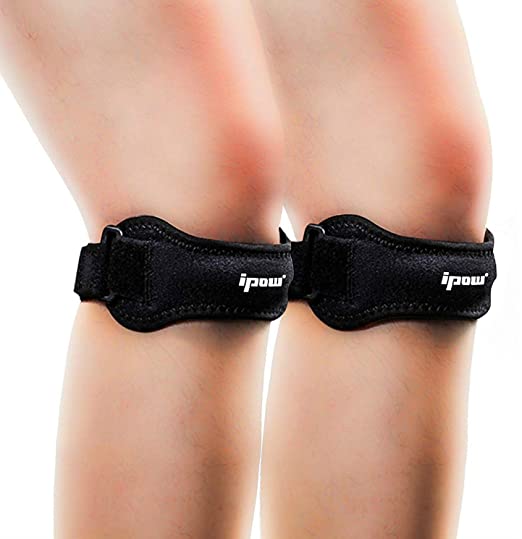Introduction
Are you interested in improving your fitness level and embracing a healthy lifestyle? Running can be an excellent way to achieve these goals. Whether you’re aiming to lose weight, boost your cardiovascular health, or simply enjoy the outdoors, running offers numerous benefits. This article will guide you through How to Start Running, from setting goals and preparing your body to staying motivated and preventing injuries. Get ready to lace up your running shoes and embark on a transformative fitness adventure!
Why Run? The Benefits of Running
Running offers a myriad of physical, mental, and emotional benefits. Let’s delve into some of the key advantages of incorporating running into your lifestyle:
- Improved Cardiovascular Health: Running is an excellent cardiovascular exercise that strengthens your heart and improves blood circulation. Regular running can reduce the risk of heart disease, lower blood pressure, and improve overall cardiovascular fitness.
- Weight Loss and Management: Running is an effective way to burn calories and shed unwanted pounds. By incorporating running into your routine, you can create a calorie deficit, which is essential for weight loss. Additionally, running boosts your metabolism, allowing you to burn calories even after your workout.
- Mental Well-being: Running has a positive impact on mental health by reducing stress, anxiety, and depression. It stimulates the release of endorphins, which are known as “feel-good” hormones, promoting a sense of happiness and overall well-being.
- Increased Stamina and Endurance: Regular running gradually improves your stamina and endurance levels. As you progress, you’ll be able to run longer distances and endure physical activities with greater ease.
- Stronger Muscles and Bones: Running is a weight-bearing exercise that strengthens your muscles, including your leg muscles, core, and even upper body muscles when you maintain proper form. It also promotes bone density, reducing the risk of osteoporosis.
- Improved Sleep Quality: Running helps regulate your sleep patterns and promotes better sleep quality. It can alleviate insomnia and help you fall asleep faster, allowing for more restful nights.
- Boosted Immune System: Engaging in regular aerobic exercise like running can enhance your immune system, reducing the risk of illnesses and infections.
- Increased Confidence and Self-esteem: Accomplishing running goals, such as completing a race or achieving a new personal best, can boost your confidence and self-esteem. Running provides a sense of achievement and empowers you to overcome challenges.

Rymora Leg Compression Sleeve, Calf Support Sleeves Legs Pain Relief for Men and Women, Comfortable and Secure Footless Socks for Fitness, Running, and Shin Splints – Grey, Small (One Pair)
Setting Goals: Define Your Running Objectives
Before you begin your running journey, it’s essential to set clear and achievable goals. Setting goals will keep you motivated and focused. Here are some tips to help you define your running objectives:
- Determine Your Why: Understand why you want to start running. Whether it’s for weight loss, improving fitness, or challenging yourself, knowing your motivations will keep you committed.
- Start with Realistic Goals: Set achievable goals based on your current fitness level and running experience. It’s better to start with smaller milestones and gradually progress to more significant challenges.
- Consider Time and Frequency: Decide how many days per week you can dedicate to running and how much time you can allocate to each session. Consistency is key to making progress.
- Measure Your Progress: Set specific targets, such as running a certain distance or completing a race within a specific time frame. Breaking down your goals into smaller, measurable steps will make them more attainable.
- Adapt and Evolve: As you achieve your initial goals, reassess and set new ones to keep yourself engaged and motivated. Embrace new challenges, such as longer distances or faster pace targets.
Remember, running is a personal journey, and your goals may differ from others. Focus on what you want to achieve and work towards it at your own pace.
Preparing Your Body for Running
Before you hit the pavement, it’s crucial to prepare your body for the physical demands of running. Here are some essential steps to get you started:
3.1 Warming Up and Stretching
Warming up before a run is essential to prime your muscles and prevent injuries. Start with light cardiovascular exercises, such as brisk walking or gentle jogging, for about 5-10 minutes. Afterward, incorporate dynamic stretches that target major muscle groups, such as leg swings, walking lunges, and high knees.
3.2 Building Endurance with Walk-Run Intervals
If you’re new to running or have been inactive for a while, it’s important to build your endurance gradually. Incorporating walk-run intervals into your training can help you ease into running and prevent overexertion. Begin with a brisk walk for a few minutes to warm up, then alternate between jogging and walking. For example, jog for one minute, followed by walking for two minutes. Repeat this cycle for a set duration or distance, gradually increasing the jogging time and decreasing the walking time as your fitness improves.
3.3 Strengthening Key Muscles
To improve your running performance and prevent injuries, it’s crucial to strengthen key muscles. Focus on exercises that target your legs, core, and glutes. Squats, lunges, planks, and bridges are effective exercises to include in your strength training routine. Additionally, incorporating cross-training activities like cycling or swimming can help develop overall muscular strength and balance.

Running Belt Waist Pack Bag,Workout Gear,Gym Fitness Fanny Pack for Phone,Cell Phone Holder for Running,Jogging Pocket Belt for Women & Men,Running Accessories(Blue)
Finding the Right Running Gear
Choosing the appropriate running gear is essential for comfort, safety, and injury prevention. Here are some considerations when selecting your running essentials:
4.1 Choosing the Perfect Running Shoes
Invest in a pair of well-fitting running shoes that provide proper cushioning, support, and stability for your feet. Visit a specialty running store to get fitted by experts who can analyze your gait and recommend the right shoe type for your foot structure.
4.2 Dressing for Comfort and Safety
Wear moisture-wicking and breathable clothing that allows for freedom of movement. Dress appropriately for the weather conditions, layering up in colder temperatures and opting for lightweight, sweat-wicking fabrics in hot weather. Don’t forget to wear reflective gear or bright colors when running in low-light conditions for enhanced visibility and safety.
4.3 Utilizing Accessories and Gadgets
Consider using accessories and gadgets that can enhance your running experience. These may include a comfortable running belt or armband to carry your essentials, a GPS watch or smartphone app to track your distance and pace, and headphones for music or podcasts to keep you motivated during your runs.
Creating a Running Schedule
Establishing a running schedule will help you stay consistent and gradually progress. Here’s how to structure your weekly training plan:
5.1 Establishing Realistic Milestones
Set realistic milestones that align with your goals. These could include running a certain distance, completing a specific race, or improving your pace. Break down your long-term goals into smaller, achievable milestones to track your progress effectively.
5.2 Structuring Your Weekly Training Plan
Plan your running sessions throughout the week, considering your other commitments and allowing for adequate rest and recovery. Aim for a mix of easy runs, moderate-intensity runs, and one or two dedicated days for longer or more intense workouts. Gradually increase your mileage and intensity over time to avoid overtraining.
5.3 Incorporating Cross-Training and Rest Days
To prevent overuse injuries and promote overall fitness, include cross-training activities like cycling, swimming, or strength training on non-running days. Additionally, allocate at least one or two rest days each week to allow your body to recover and rejuvenate.

IPOW 2 Pack Knee Pain Relief & Patella Stabilizer Knee Strap Brace Support for Hiking, Soccer, Basketball, Running, Jumpers Knee, Tennis, Tendonitis, Volleyball & Squats, Black
Proper Running Techniques
Maintaining proper running techniques is crucial for efficiency, injury prevention, and enjoyable runs. Here are some key aspects to focus on:
6.1 Maintaining Good Posture and Form
Keep your head up, shoulders relaxed, and spine straight while running. Avoid slouching or leaning too far forward or backward. Engage your core muscles to maintain stability and proper alignment throughout your run.
6.2 Focusing on Breathing
Practice rhythmic and deep breathing while running. Inhale deeply through your nose, allowing your diaphragm to expand, and exhale through your mouth.
6.3 Pacing Yourself
Find a comfortable and sustainable pace that allows you to maintain your running form and breathe smoothly. Avoid starting too fast or pushing yourself beyond your limits, especially during the initial stages of your running journey. Gradually increase your pace as your fitness improves.
Staying Motivated and Overcoming Challenges
To stay motivated and committed to your running routine, consider the following strategies:
7.1 Setting Short-term and Long-term Rewards
Reward yourself for achieving milestones and reaching your running goals. Treat yourself to a new running gear item, a massage, or a day of relaxation. Additionally, set long-term rewards that provide extra motivation, such as participating in a race or planning a running vacation.
7.2 Finding a Running Buddy or Joining a Group
Running with a partner or joining a running group can enhance your motivation and make the experience more enjoyable. Surrounding yourself with like-minded individuals creates a supportive environment and adds a social aspect to your running routine.
7.3 Embracing Music and Audiobooks
Create a running playlist with energizing and uplifting songs that match your pace. Music can boost your mood, distract from fatigue, and keep you motivated throughout your run. Alternatively, listen to audiobooks or podcasts to engage your mind while you exercise.
Avoiding Running Injuries
Preventing running injuries is crucial for maintaining a consistent training routine. Consider the following tips:
8.1 Listening to Your Body
Pay attention to any signs of discomfort, pain, or fatigue during your runs. If something feels off, take a break, and give your body time to recover. Ignoring pain can lead to more serious injuries.
8.2 Gradually Increasing Intensity and Distance
Avoid sudden increases in mileage or intensity, as this can put excessive strain on your muscles and joints. Gradually progress your training by incrementally increasing your mileage or pace to allow your body to adapt.
8.3 Implementing Cross-Training and Strength Training
Incorporating cross-training activities and strength training into your routine can improve your overall fitness and reduce the risk of running-related injuries. Focus on exercises that target your core, legs, and hips to build strength and stability.

AiRunTech Upgraded No Bounce Hydration Belt Can be Cut to Size Design Strap for Any Hips for Men Women Running Belt with Water Bottle Holder with Large Pocket Fits Most Smartphones
Tracking Your Progress
Monitoring your progress can provide motivation and help you assess your running performance. Consider the following methods:
9.1 Utilizing Running Apps and Wearable Devices
Download a running app or invest in a wearable device that tracks your distance, pace, and other performance metrics. These tools provide valuable insights into your progress, allowing you to set new goals and make adjustments to your training plan.
9.2 Logging Your Runs and Monitoring Performance
Keep a running journal or use a digital platform to record your runs. Note the distance, time, route, and any observations or feelings about the run. Regularly reviewing your journal can help you identify patterns, strengths, and areas for improvement.
9.3 Celebrating Milestones and Achievements
Celebrate your achievements along the way. When you reach a goal or milestone, acknowledge your hard work and treat yourself to something special. Celebrating your progress reinforces your commitment and boosts your confidence.
Nutrition and Hydration for Runners
Proper nutrition and hydration are essential for fueling your runs and aiding in recovery. Consider the following guidelines:
10.1 Fueling Your Body with the Right Foods
Consume a balanced diet that includes carbohydrates for energy, lean proteins for muscle repair, and healthy fats for overall health. Prioritize whole foods such as fruits, vegetables, whole grains, lean meats, and healthy fats. Additionally, pay attention to your pre-run and post-run nutrition to optimize your performance and recovery.
10.2 Maintaining Proper Hydration Levels
Stay adequately hydrated before, during, and after your runs. Drink water regularly throughout the day and consider electrolyte-rich beverages or sports drinks for longer runs or when running in hot weather. Monitor your urine color to ensure you’re adequately hydrated.
10.3 Pre- and Post-Run Nutrition Tips
Consume a light and balanced meal or snack containing carbohydrates and a small amount of protein before your runs to provide energy. After your runs, prioritize post-workout nutrition by consuming a combination of carbohydrates and protein to aid in muscle recovery.
Common Running Mistakes to Avoid
To ensure a successful and enjoyable running experience, be aware of the following common mistakes and take steps to avoid them:
11.1 Overtraining and Ignoring Rest Days
Pushing yourself too hard without adequate rest and recovery can lead to burnout and increased risk of injuries. Listen to your body and schedule regular rest days to allow for proper recovery.
11.2 Neglecting Strength and Flexibility Training
Running-specific strength and flexibility training help improve your running performance and reduce the risk of imbalances and injuries. Include exercises that target your core, hips, and leg muscles, as well as stretching routines to maintain flexibility.
11.3 Skipping Warm-ups and Cool-downs
Failing to warm up before running and neglecting to cool down afterward can increase the risk of injuries. Dedicate a few minutes to dynamic stretches and light jogging before your runs, and conclude each session with static stretches to promote muscle recovery.

ALOVECO Outdoor Night Running Lights LED Chest Light Back Warning Light with Rechargeable Battery for Camping Hiking Running Jogging Outdoor Adventure (90° Adjustable Beam)
Conclusion
Embarking on a running journey is an exciting and rewarding endeavor. By following the steps outlined in this article, you can start running with confidence, improve your fitness level, and embrace a healthier lifestyle. Remember to set realistic goals, prepare your body, choose appropriate gear, and prioritize injury prevention. Stay motivated, track your progress, and nourish your body properly to achieve long-term success. Lace up your shoes, hit the road, and enjoy the exhilarating experience of running!
Frequently Asked Questions (FAQs)
13.1 What is the best time to go running?
The best time to go running depends on your personal preference and schedule. Some people enjoy running in the morning to kickstart their day, while others prefer running in the evening as a way to unwind. Choose a time that works best for you and allows you to maintain consistency in your running routine.
13.2 Can I run if I have joint problems?
Running can put stress on your joints, so if you have existing joint problems or injuries, it’s advisable to consult with a healthcare professional before starting a running program. They can provide guidance on appropriate modifications or alternative exercises to protect your joints.
13.3 Is it normal to feel sore after running?
Feeling soreness, especially in the early stages of running, is normal. It indicates that your muscles are adapting to the new activity. However, if the soreness is severe or persists for an extended period, it may be a sign of overexertion or injury. Gradually increase your mileage and listen to your body to prevent excessive soreness.
13.4 How long does it take to see results from running?
The time it takes to see results from running varies depending on several factors, including your starting fitness level, consistency, and individual body composition. Generally, noticeable improvements in endurance, fitness, and weight loss can be seen within a few weeks to a couple of months of regular running.
13.5 Can I run on a treadmill instead of outdoors?
Yes, running on a treadmill is a valid option, especially if weather conditions or safety concerns prevent you from running outdoors. Treadmill running provides a controlled environment, and you can adjust the incline and speed to simulate different running conditions. Just ensure proper treadmill safety and technique to maximize your workout.
Incorporating running into your life can be a transformative journey. With the right approach and mindset, you can enjoy the numerous benefits of running while achieving your personal fitness goals. Lace up your shoes, embrace the joy of running, and witness the positive impact it can have on your overall well-being.

